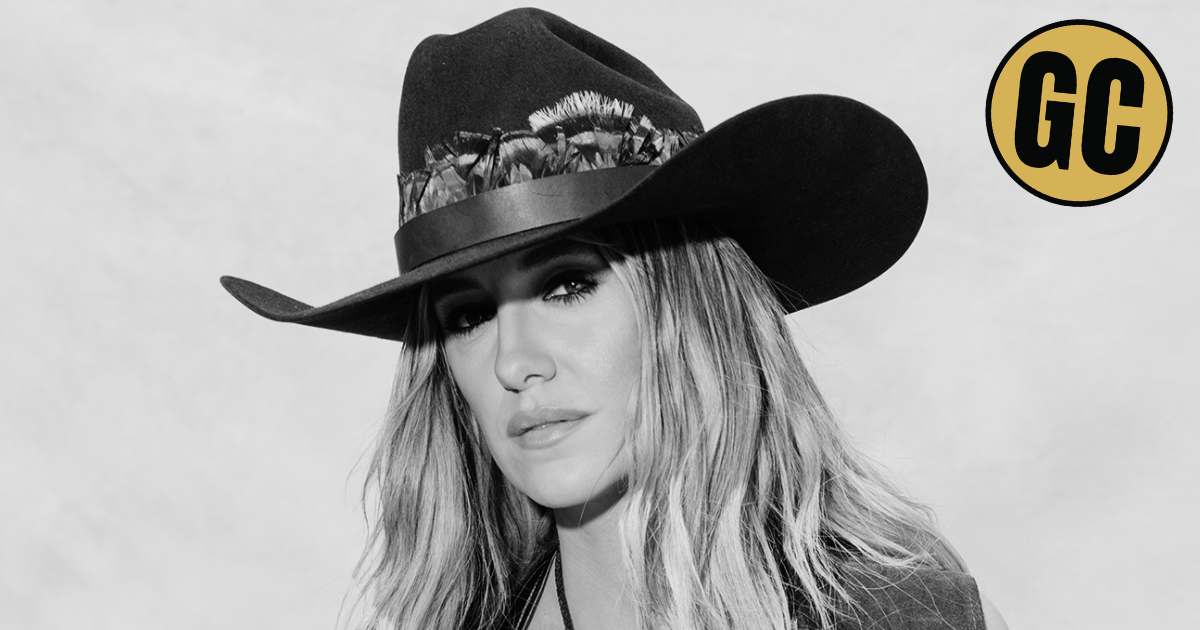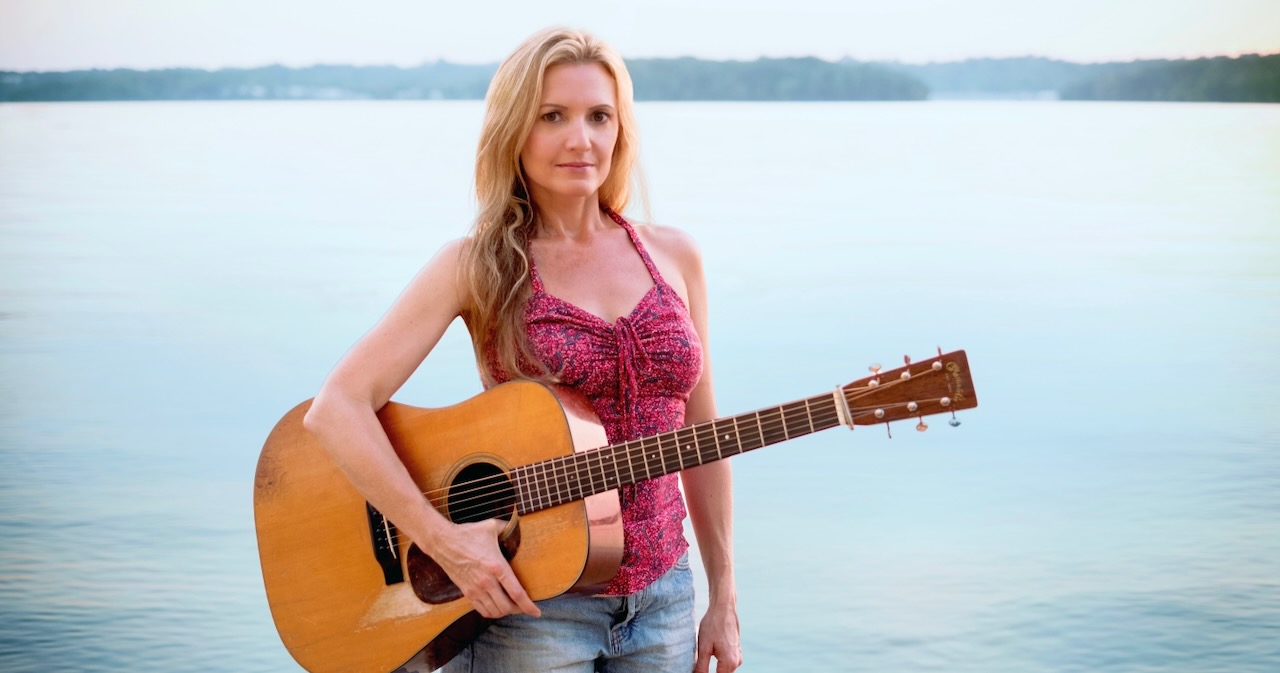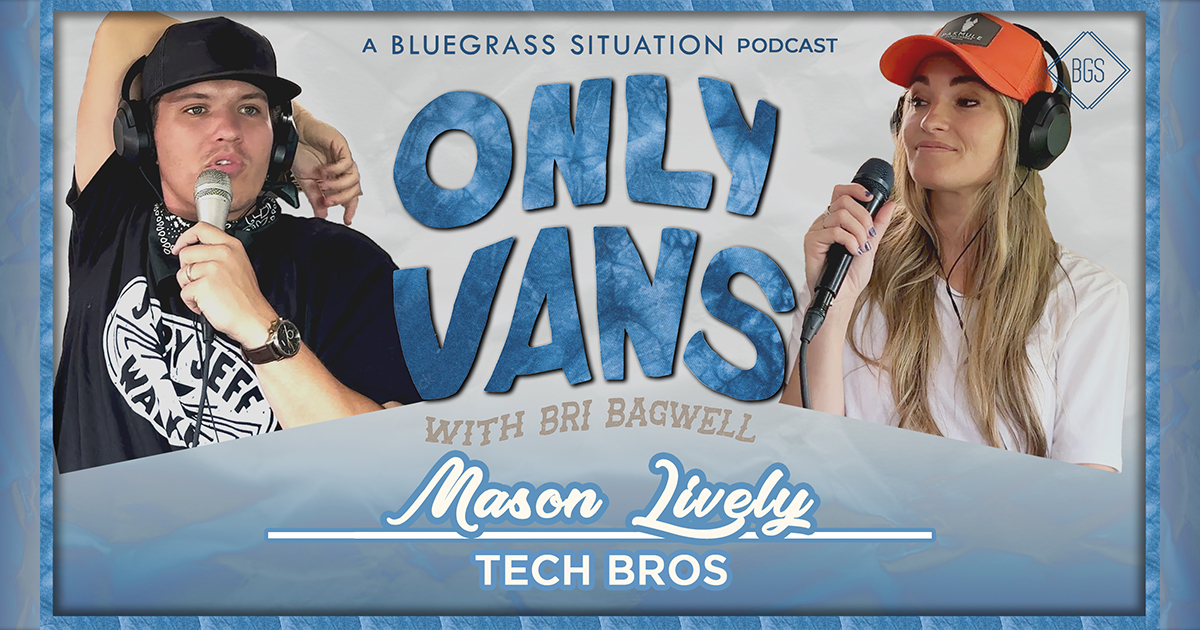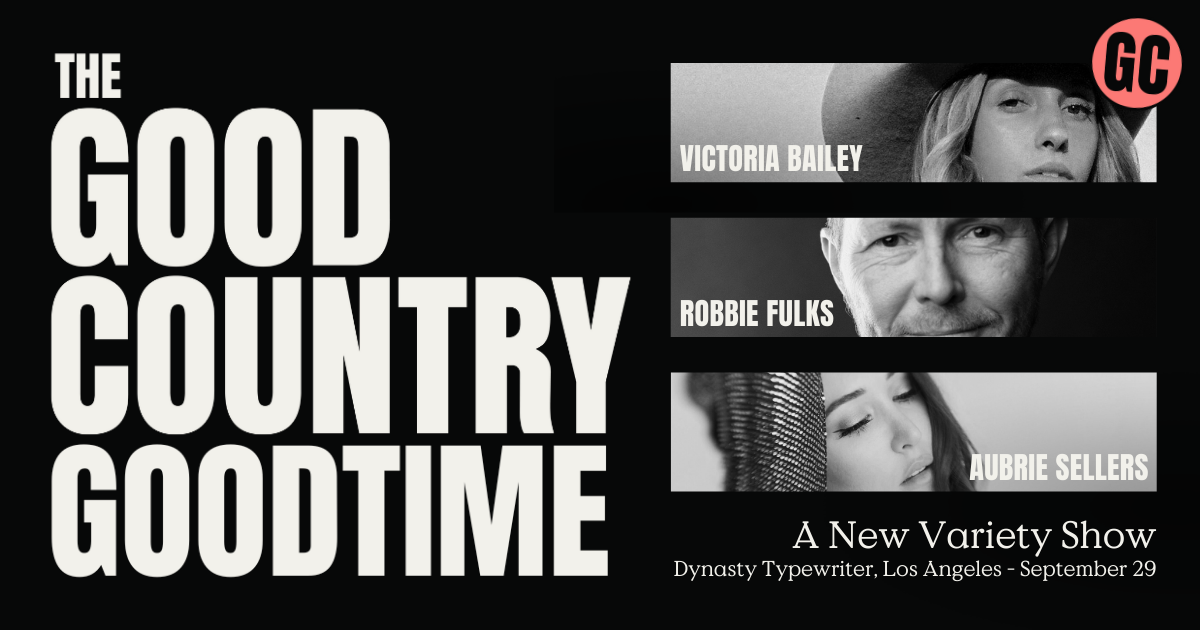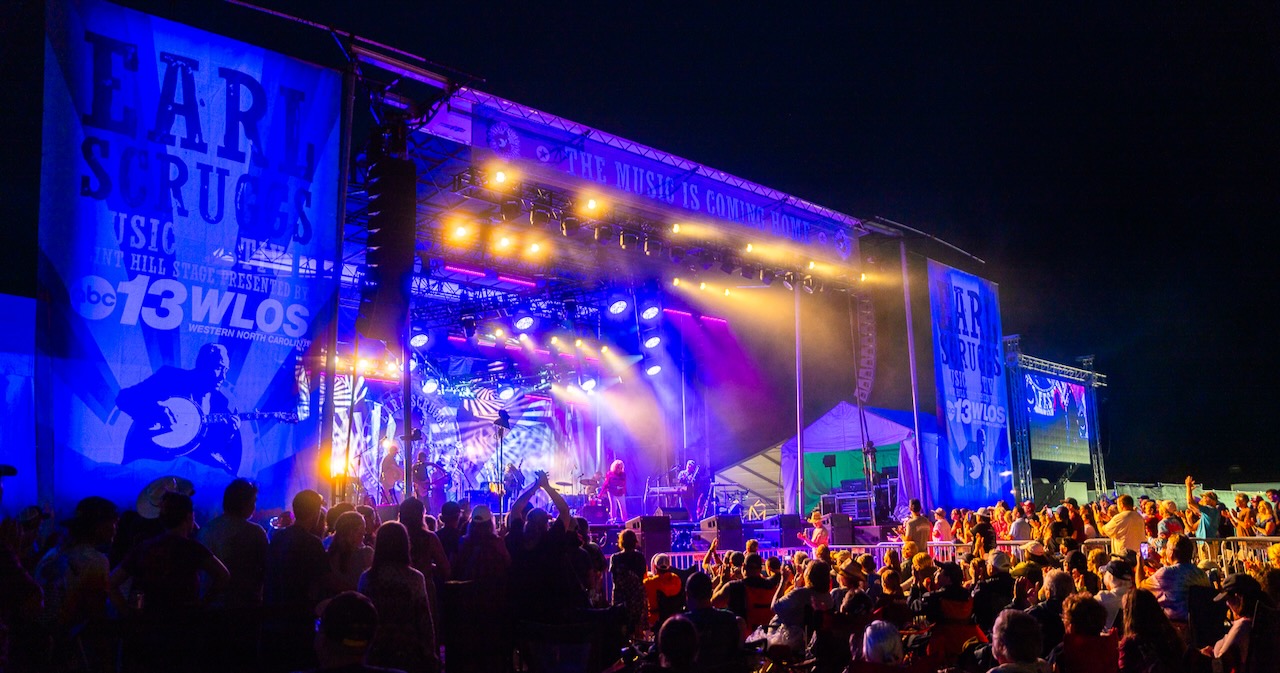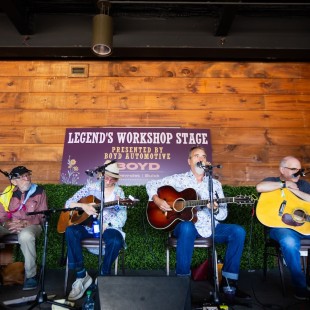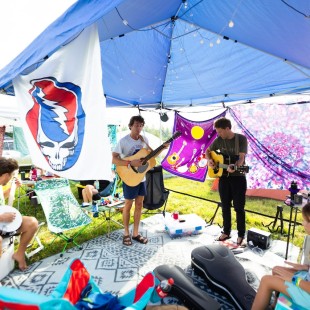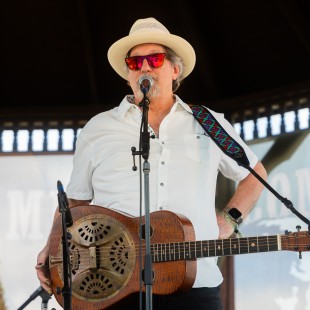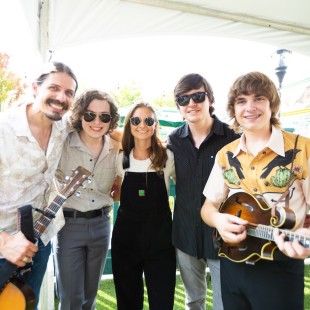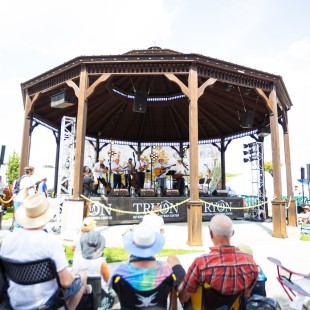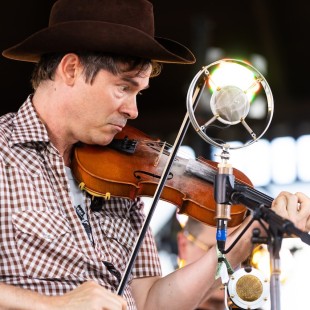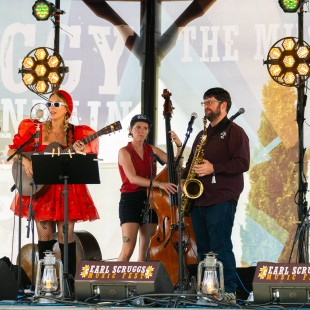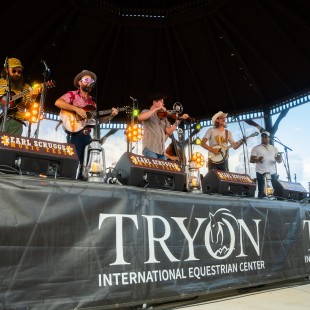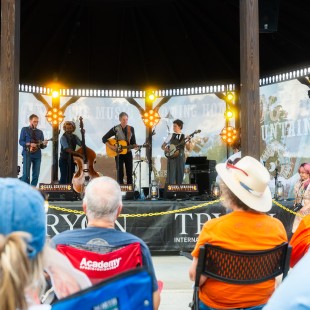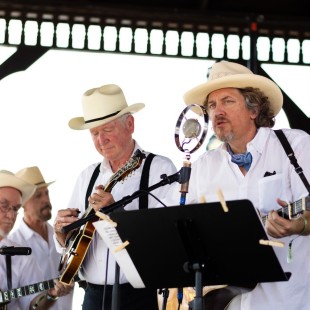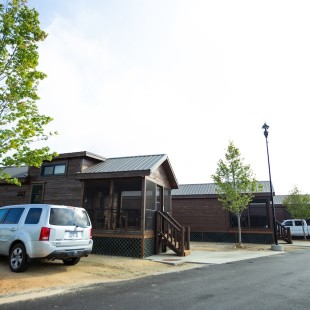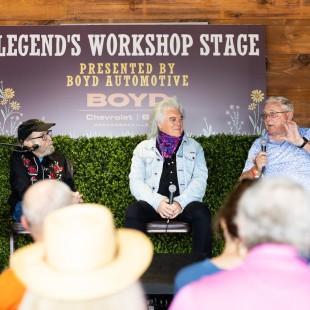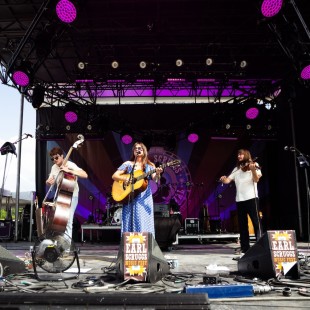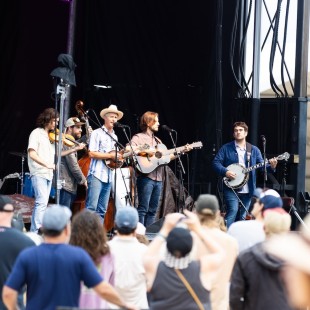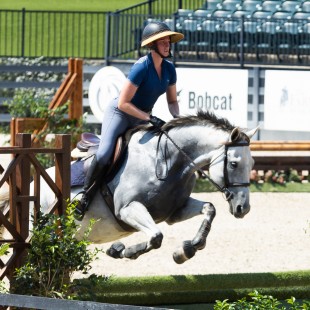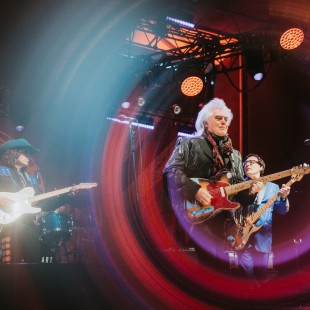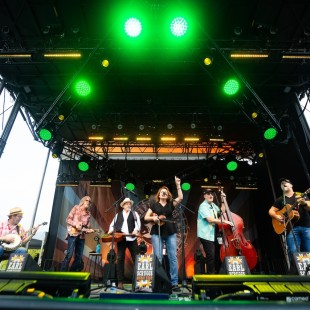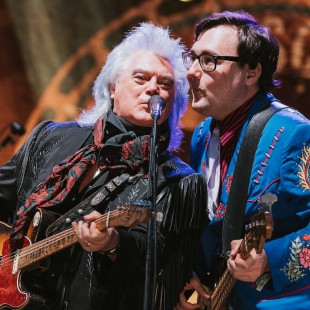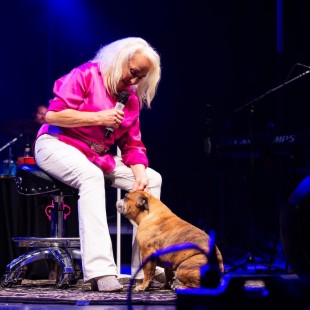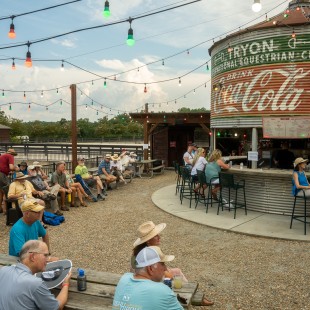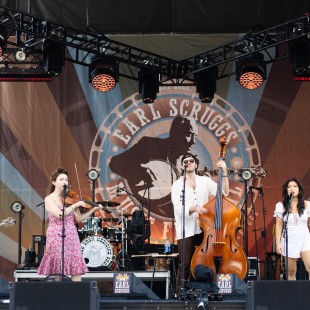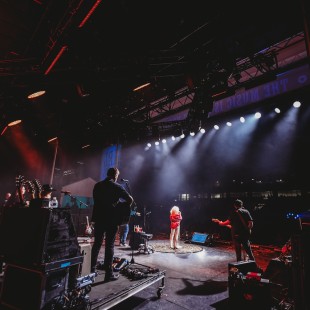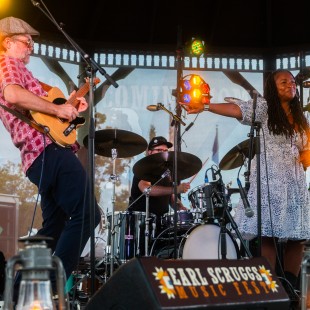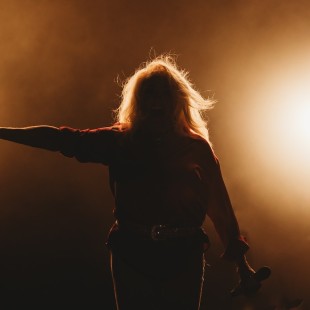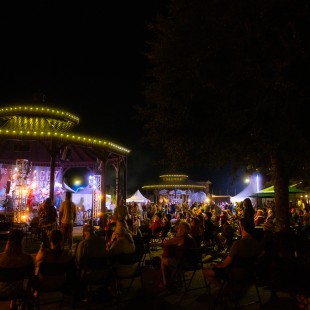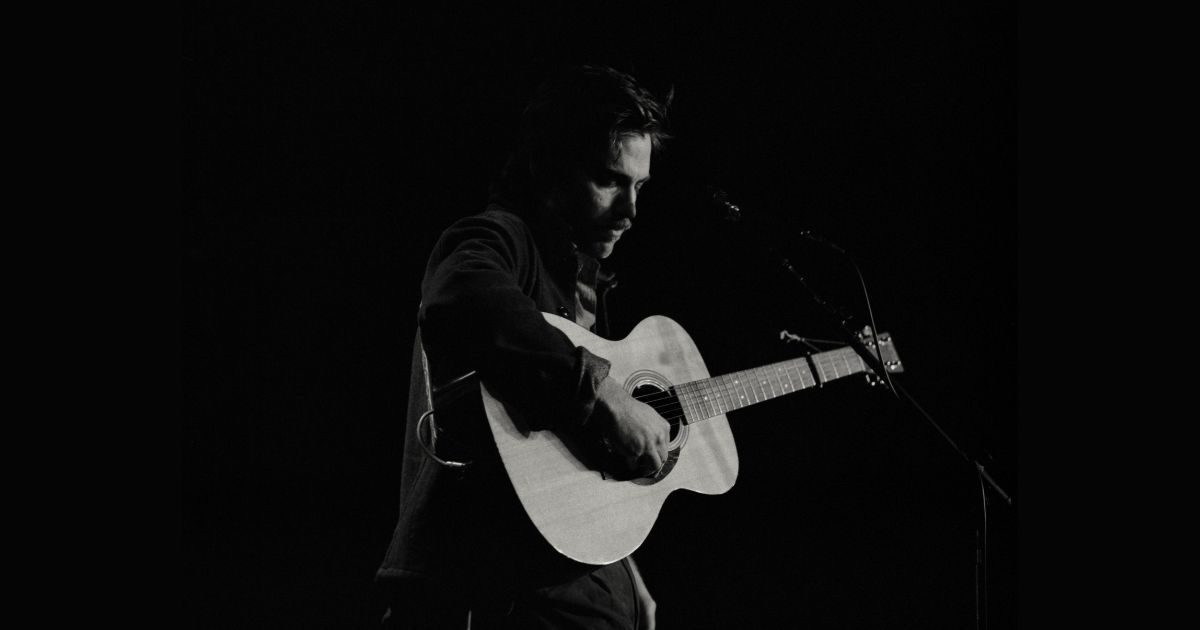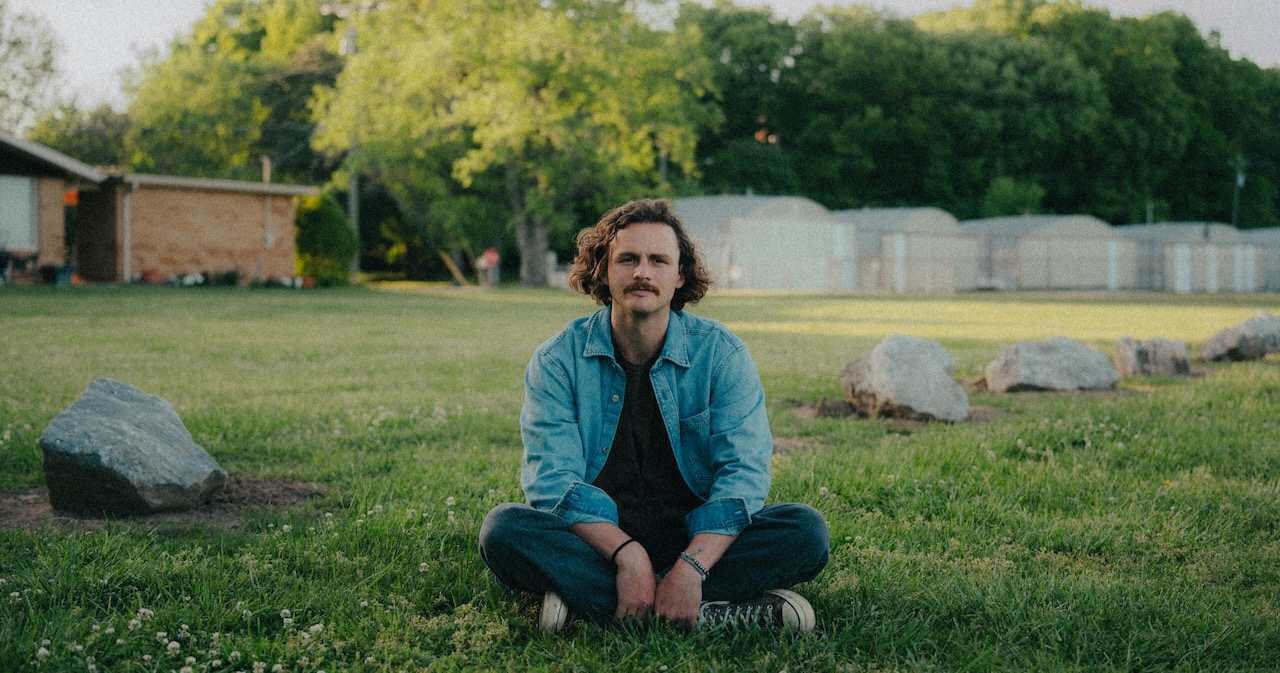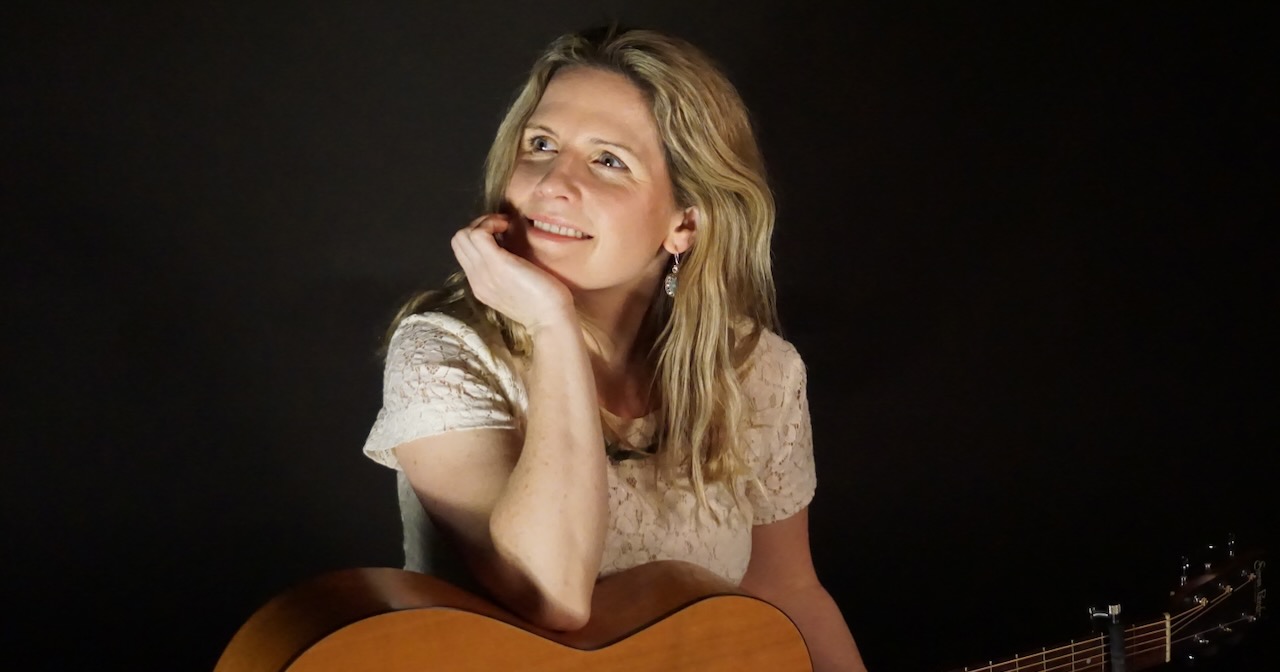(Editor’s Note: Sign up on Substack to receive even more Good Country content direct to your email inbox!)
The headline takeaways from this year’s CMA Awards nominations may be the inclusion (and exclusion) of pop superstars, with understandable interest in what that says about today’s country format. But the 2024 field features plenty of roots and bluegrass influence, too. Regular BGS and Good Country readers might even be surprised at the confluence of the modern mainstream and its traditional tributaries.
We want to highlight that dynamic as well. Country has always been a big tent, but is it now becoming more receptive to its roots?
Let’s start with the superstars. These days, many can claim a rootsy kind of rebelliousness, and chief among those is Chris Stapleton. With his long history – in bluegrass, in Southern rock, in classic country songwriting, and with a train load of CMA trophies – Stapleton vies once again for what would be his first Entertainer of the Year award – after a record-setting eight nominations. Yet he still sings with the fiery Appalachian soul he debuted at the front of The SteelDrivers.
Others earning top billing this year include Zach Bryan and Lainey Wilson – and both have a reputation for gritty, creative realism. Some of the hottest new names country has to offer, Bryan has been selling out stadiums with his confessional alt-country and Wilson’s bluesy Louisiana swagger earned her last year’s Entertainer of the Year title. Those are not the only established artists holding true to the cause, though.
Kacey Musgraves continues to show salt-of-the-earth songcraft is not mutually exclusive to shimmering pop decadence. And while Ashley McBryde has perfected the art of making arenas feel like a massive, county-line roadhouse, Cody Johnson proves the appetite for hardcore Texas twang did not die with King George’s (semi) abdication. All have become perennial fixtures in the format’s upper echelons.
Likewise, this year’s nominees offer excitement for the future, awash with fresh talent. Shaboozey turned heads with the Number One ear worm, “A Bar Song (Tipsy),” but dig beyond the single and his catalog marks an elusive missing link between the hard-times inspirations of both hip-hop and country. Artists like Zach Top – who also came up through bluegrass – accept no substitute for twangy telecasters and shuffling, two-step beats. And while The War and Treaty continue their mission to bring soul and gospel back into the heart of country, The Red Clay Strays find a home for their blend of heady roots rock and commanding, fire-and-brimstone vocals.
Even the behind-the-scenes nominees highlight this rootsy resurgence, with the Musician of the Year category dominated by keepers of the instrumental flame. Fiddle phenom Jenee Fleenor goes head to head with steel-guitar legend Paul Franklin and the multi-talented guitarist/Americana artist Charlie Worsham – while the other two, guitarists Tom Bukovac and Rob McNelley, are certainly no slouches when it comes to six-string scholarship.
In fact, the commonalities between this year’s CMA Awards nominees and the artists covered by BGS and GC are so striking, we wonder what you think. Take a look at the full list of nominees below, and let us know.
THE 58TH ANNUAL CMA AWARDS – FINAL NOMINEES (by ballot category order):
ENTERTAINER OF THE YEAR
Luke Combs
Jelly Roll
Chris Stapleton
Morgan Wallen
Lainey Wilson
SINGLE OF THE YEAR
Award goes to Artist(s), Producer(s) and Mix Engineer(s)
“A Bar Song (Tipsy)” – Shaboozey
Producers: Sean Cook, Nevin Sastry
Mix Engineer: Raul Lopez
“Dirt Cheap” – Cody Johnson
Producer: Trent Willmon
Mix Engineer: Jack Clarke
“I Had Some Help” – Post Malone (Feat. Morgan Wallen)
Producers: Louis Bell, Charlie Handsome, Hoskins
Mix Engineer: Ryan Gore
“Watermelon Moonshine” – Lainey Wilson
Producer: Jay Joyce
Mix Engineers: Jason Hall, Jay Joyce
“White Horse” – Chris Stapleton
Producers: Dave Cobb, Chris Stapleton, Morgane Stapleton
Mix Engineer: Vance Powell
ALBUM OF THE YEAR
Award goes to Artist, Producer(s) and Mix Engineer(s)
Deeper Well – Kacey Musgraves
Producers: Ian Fitchuk, Kacey Musgraves, Daniel Tashian
Mix Engineers: Shawn Everett, Konrad Snyder
Fathers & Sons – Luke Combs
Producers: Luke Combs, Chip Matthews, Jonathan Singleton
Mix Engineer: Chip Matthews
Higher – Chris Stapleton
Producers: Dave Cobb, Chris Stapleton, Morgane Stapleton
Mix Engineer: Vance Powell
Leather – Cody Johnson
Producer: Trent Willmon
Mix Engineer: Jack Clarke
Whitsitt Chapel – Jelly Roll
Producers: Andrew Baylis, Brock Berryhill, Zach Crowell, Jesse Frasure, David Garcia, Kevin “Thrasher” Gruft, Austin Nivarel, David Ray Stevens
Mix Engineers: Jeff Braun, Jim Cooley
SONG OF THE YEAR
Award goes to Songwriter(s)
“Burn It Down”
Songwriters: Hillary Lindsey, Parker McCollum, Lori McKenna, Liz Rose
“Dirt Cheap”
Songwriter: Josh Phillips
“I Had Some Help”
Songwriters: Louis Bell, Ashley Gorley, Charlie Handsome, Hoskins, Austin Post, Ernest Keith Smith, Morgan Wallen, Chandler Paul Walters
“The Painter”
Songwriters: Benjy Davis, Kat Higgins, Ryan Larkins
“White Horse”
Songwriters: Chris Stapleton, Dan Wilson
FEMALE VOCALIST OF THE YEAR
Kelsea Ballerini
Ashley McBryde
Megan Moroney
Kacey Musgraves
Lainey Wilson
MALE VOCALIST OF THE YEAR
Luke Combs
Jelly Roll
Cody Johnson
Chris Stapleton
Morgan Wallen
VOCAL GROUP OF THE YEAR
Lady A
Little Big Town
Old Dominion
The Red Clay Strays
Zac Brown Band
VOCAL DUO OF THE YEAR
Brooks & Dunn
Brothers Osborne
Dan + Shay
Maddie & Tae
The War And Treaty
MUSICAL EVENT OF THE YEAR
Award goes to Artists and Producer(s)
“Cowboys Cry Too” – Kelsea Ballerini (with Noah Kahan)
Producers: Kelsea Ballerini, Alysa Vanderheym
“I Had Some Help” – Post Malone (Feat. Morgan Wallen)
Producers: Louis Bell, Charlie Handsome, Hoskins
“I Remember Everything” – Zach Bryan (ft. Kacey Musgraves)
Producer: Zach Bryan
“Man Made A Bar” – Morgan Wallen (feat. Eric Church)
Producer: Joey Moi
“you look like you love me” – Ella Langley (feat. Riley Green)
Producer: Will Bundy
MUSICIAN OF THE YEAR
Tom Bukovac – Guitar
Jenee Fleenor – Fiddle
Paul Franklin – Steel Guitar
Rob McNelley – Guitar
Charlie Worsham – Guitar
MUSIC VIDEO OF THE YEAR
Award goes to Artist(s) and Director(s)
“Dirt Cheap” – Cody Johnson
Director: Dustin Haney
“I Had Some Help” – Post Malone (Feat. Morgan Wallen)
Director: Chris Villa
“I’m Not Pretty” – Megan Moroney
Directors: Jeff Johnson, Megan Moroney
“The Painter” – Cody Johnson
Director: Dustin Haney
“Wildflowers and Wild Horses” – Lainey Wilson
Director: Patrick Tracy
NEW ARTIST OF THE YEAR
Megan Moroney
Shaboozey
Nate Smith
Mitchell Tenpenny
Zach Top
Bailey Zimmerman
Sign up on Substack to receive even more Good Country content direct to your email inbox!
